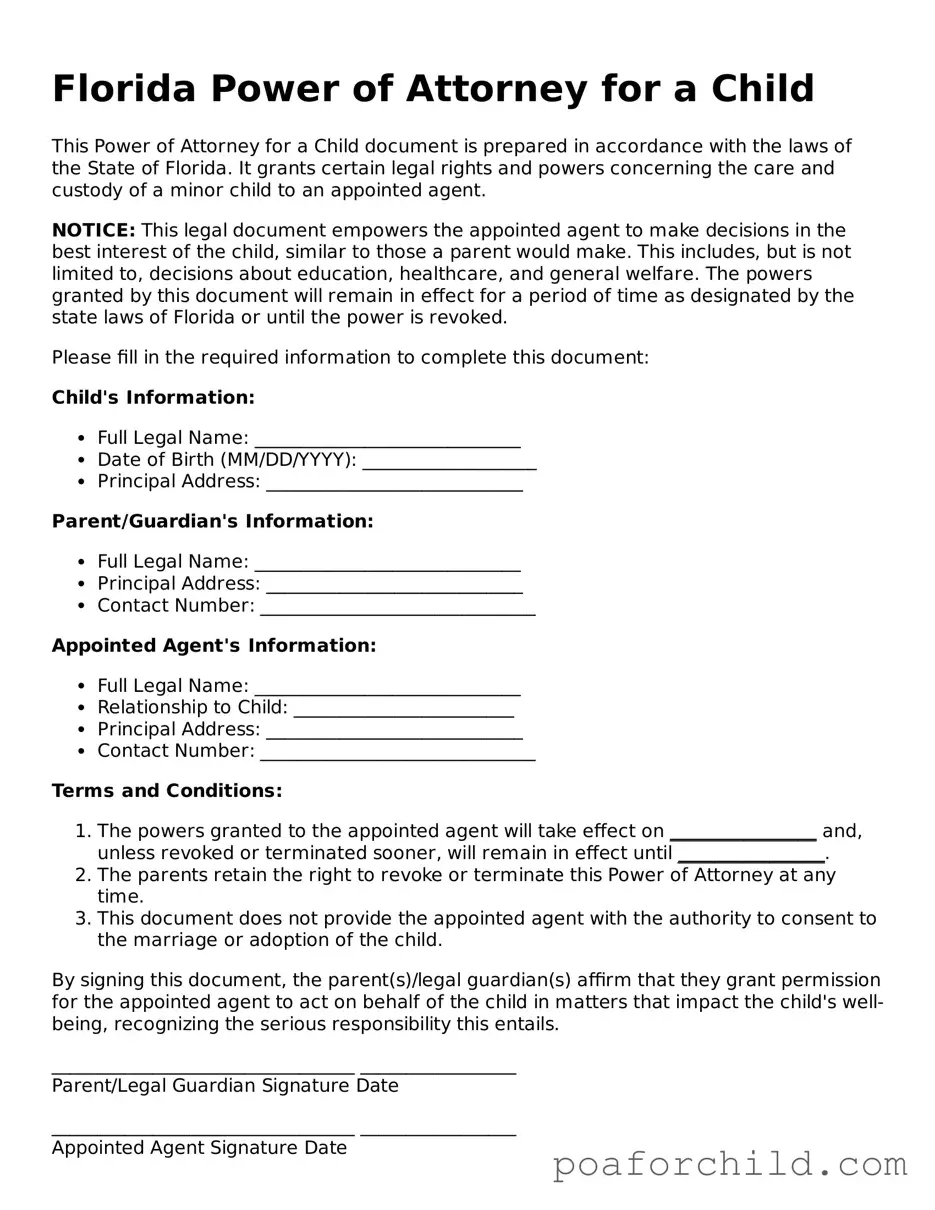Detailed Guide for Using Florida Power of Attorney for a Child
When you're appointed to make decisions on behalf of a child, it's crucial to fill out the Florida Power of Attorney for a Child form properly. This document legally allows you to act in the best interest of the child, covering a range of actions from medical decisions to schooling matters. Here's a step-by-step guide to ensure the form is filled out correctly, avoiding common mistakes and ensuring your authority is recognized without question.
- Start by entering the date at the top of the form. It's important that the document reflects the current date for validity.
- Next, fill in your full legal name and address where indicated. This identifies you as the person being granted Power of Attorney.
- Write the full name and address of the child or children you’re being granted authority over in the designated spaces. If there are multiple children, make sure to include information for each one.
- Enter the name(s) and address(es) of the child's legal guardian(s) or parent(s). This section confirms who is granting you this authority.
- Detail the powers being granted. This section requires careful attention. Specify the areas over which you have decision-making authority, such as healthcare, education, or financial decisions. Be as clear and precise as possible.
- Specify the time period for which the Power of Attorney will be in effect. If it’s for a fixed period, note the start and end dates. For an open-ended arrangement, appropriate legal language indicating such must be used.
- Both you and the child’s parent or legal guardian must sign the document in the presence of a notary. This step is vital as it legitimizes the document. Locate a notary public, who will witness the signatures and seal the document. Be sure all parties have a valid form of identification at the time of notarization.
- Lastly, make copies of the signed document. Provide one to the child’s school, healthcare providers, and any other relevant parties. Keep the original document in a safe place for future reference.
Filling out the Florida Power of Attorney for a Child form accurately is the first step in a responsible guardianship arrangement. By following these steps, you can ensure that you are fully prepared to act in the child's best interest, backed by legal authority. Remember, the welfare of the child is the paramount concern, and this document empowers you to provide care, make decisions, and take actions that support their well-being.
